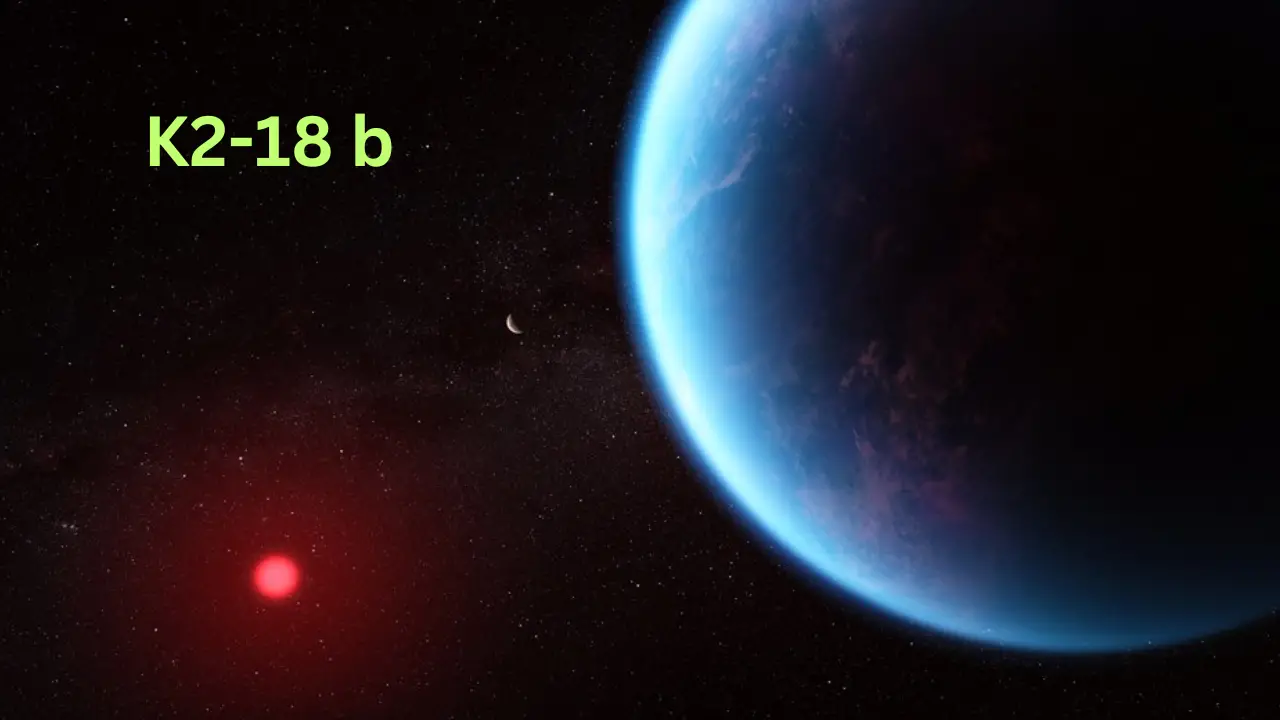The James Webb Space Telescope (JWST) of NASA recently made a startling discovery that might fundamentally alter how we think about life in space. Following extensive research, the telescope has concentrated on K2-18 b, an exoplanet with a mass around 8.6 times that of Earth. The results of this investigation are very astounding. Water vapor has been detected in the atmosphere of this exoplanet through spectroscopic investigations, and it is located within the star’s habitable zone. This alluring clue raises the intriguing questions regarding the possibility of habitability and the existence of life on K2-18 b. This revelation opens the door to fascinating new study directions in the search for extraterrestrial life, which we anxiously anticipate further examination and exploration of.
Discovery of Life-Sustaining Molecules
The identification of carbon dioxide (CO2) and methane (CH4), two elements essential to life as we know it, in the atmosphere of K2-18 b is the subject of a recent, ground-breaking discovery. Since these gases are necessary to support biological activity, their presence points to the possibility of habitability on this far-off planet.
The discovery is all the more fascinating because it identifies the molecule as “Dimethyl Sulphide” (DMS). DMS is frequently linked to biological activities on Earth, like the ocean’s phytoplankton production. The intriguing idea that DMS may function as a sign of possible life on this far-off planet is raised by the discovery of this molecule on K2-18 b.
These chemicals’ finding not only offers intriguing new information on K2-18 b’s habitability, but it also creates new opportunities for research and a better comprehension of exoplanets. As these gases hold the key to uncovering important information regarding the possibility of life beyond Earth, scientists are now eager to explore the genesis and possible biological relevance of these gases.
We are getting closer to solving the riddles of our cosmos and finding evidence of extraterrestrial life with every new detail that is discovered. The discovery of K2-18 b is evidence of human curiosity and the unwavering search for knowledge in our endeavor to comprehend our role in the universe.
The Significance of K2-18 b
The exoplanet K2-18b, which is located outside of our solar system in a far-off corner of the universe, has attracted a lot of interest and curiosity from astronomers and scientists. Though its striking size is enough to capture the imagination, what really piques the interest of scientists and astronomers worldwide is the prospect that this celestial body could contain life.
In addition to confirming the existence of K2-18b, recent discoveries and advancements have excited scientists and unlocked a world of previously unimaginable possibilities. Every new discovery fuels scientists’ curiosity about exoplanets and their potential to support life, which is paving the way for a bright future for science.
As we continue to explore the vast cosmos, the possibility of discovering life there still inspires and intrigues us. The idea of alien life existing on far-off planets stimulates our creativity and challenges our current understanding of the universe.
Researchers now use the discovery of exoplanets and the hunt for extraterrestrial life as a fascinating road map that piques their interest and inspires them to solve the mysteries of the universe. The fascination of learning the unknown only intensifies with time, driving us to seek information and deepen our comprehension of the universe we live in.
The Future of Exoplanet Research
James Webb Space Telescope (JWST) has made a spectacular finding that offers a fascinating look into a faraway planet that may be home to signs of extraterrestrial life. The JWST’s unparalleled capabilities and cutting-edge technology enable scientists to explore this enigmatic planet’s interior and uncover minute details about its composition, atmosphere, and possible habitability.
As we persist in our relentless pursuit of knowledge, our ultimate goal is to discover a planet with an atmosphere similar to our own, dear Earth. A planet that might be able to sustain life as we know it, having a breathable atmosphere, an abundance of water, and a supportive ecosystem. In addition to deepening our knowledge of the universe, such a discovery would provide insight into the formation of our own planet and the potential existence of extraterrestrial life.
The James Webb Space Telescope is an essential tool that has the potential to yield priceless insights in our quest to understand the beginnings of our planet and life in the vast cosmos. Its state-of-the-art powers, unparalleled accuracy, and astounding sensitivity hold the potential to completely transform our comprehension of the universe and our role in it. The JWST will allow us to see the formation of stars and planets, watch the birth of galaxies, and learn more about the dark matter and dark energy puzzles by looking billions of light-years into the future.
The excitement is building as we get ready to set out on this amazing voyage of adventure and discovery. The James Webb Space Telescope is proof of our inventiveness and our unquenchable desire to learn the mysteries of the cosmos. It is a ray of hope that points us in the direction of a time when we will be able to appreciate the size and splendor of the universe around us and fully understand our place in it.
Final Thoughts
Even while these new findings are clearly exciting and have a lot of potential, they are just the first steps in a long process of research and learning. In fact, the extraordinary new era of exoplanet research has been ushered in by the ground-breaking discoveries made by the James Webb Space Telescope. These discoveries have furthered our quest to solve the universe’s mysteries and, ultimately, to ascertain whether life exists anywhere outside of Earth. As we make progress in solving the mystery of the universe, the possibility of finding extraterrestrial life grows more and more alluring, capturing the interest of both scientists and dreamers.
Sources
![]()
